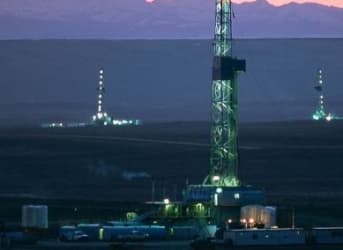The mercury is dropping in much of the United States, but a repeat of 2014 natural gas price spikes is likely not in the cards.
The harsh winter in January and February of last year prompted an excessive draw down of natural gas stocks, with inventories dipping far below the running five-year average. With shortages in certain regions, particularly in and around New York and Boston, natural gas prices shot up. Henry Hub prices briefly doubled from just above $4 per million Btu (MMBtu) in January, to above $8 per MMBtu in the first week of February.

That has prompted concerns of a rerun in 2015 of high prices. With inventories depleted, there were fears that new supplies would not replenish empty storage fast enough in time for this winter.
But fresh data from the Energy Information Administration (EIA) suggest that is unlikely. There are two reasons for this. First, this year’s winter has so far been relatively mild, with tolerable temperatures across the country in December. That has led to less consumption of natural gas than anticipated.
Related: Natural Gas Threatens U.S. Nuclear Future
The EIA revealed that in the last full week of December natural gas withdrawals were much lower than expected. Inventories saw a net decline of 26 billion cubic feet (bcf), much lower than the 34 bcf that analysts had predicted. That was also the slowest pace of net withdrawals since 2005 for the time of year.
To be sure, with a few months of winter left, there are still plenty of opportunities to see the thermometer plunge, causing an uptick in the consumption – and prices – of natural gas. But the U.S. is in a much stronger position than it was at the same time a year ago.
And that is also because of a record year for natural gas production – the second major reason that we will not see price spikes for natural gas this year. In October 2014, the last month for which production data is available, the U.S. was producing more than 2,780 bcf per month, the highest monthly total on record.

Such heady production levels allowed inventories to build back up, leaving stockpiles at 3,220 bcf as of the last week in 2014, or about 232 bcf higher than at the same point a year earlier.
Related: Top Five Possible Energy Surprises For 2015
In other words, a record year for natural gas production combined with slightly lower-than-expected demand for natural gas has eased concerns about supply shortages for the winter. It has also allowed the U.S. to restore inventories just about to their five-year average. That is a remarkable development, considering where we were in early 2014.

As a result, natural gas prices should remain low-ish for the foreseeable future, and relatively stable. In fact, taking the year of 2014 as a whole, natural gas prices actually dropped for the first time since 2011. Standing at just $3 per MMBtu in early January 2015, spot prices are now hovering around a two-year low.
This is not to say that the long-term picture looks as stable as it does right now. With WTI dropping below $50 per barrel on January 5, the pace of drilling in American shale could see a sharp cutback in the near-term. That could finally put a halt to the seemingly relentless climb in oil and gas production, precipitating a rise in prices once again.
Moreover, the U.S. is becoming increasingly dependent on natural gas for electricity as coal plants shut down. A record year for natural gas production notwithstanding, locking into a fuel that has been historically volatile will ensure consumers will be vulnerable to price swings in the years to come.
By Nick Cunningham of Oilprice.com
More Top Reads From Oilprice.com:
- Chart Of The Day: Natural Gas Suggests $33 Oil
- Texas Railroad Commission October Oil & Gas Report
- Natural Gas Overwhelmingly Replaces Coal


















